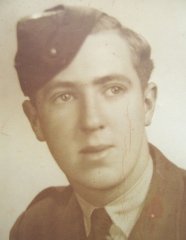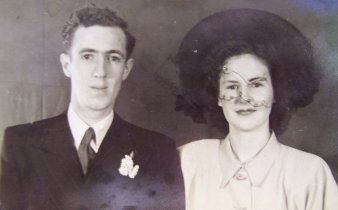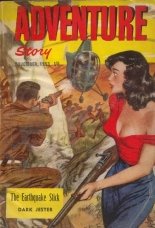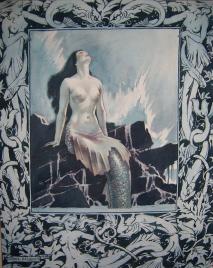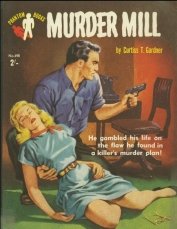| bc | Phil Belbin, Australian artist,
cartoonist and steam enthusiast
Just ONE page on the Collecting Books and Magazines web site based in Australia. THE work of Australian artist and steam enthusiast Phil Belbin is too broad and diverse to easily categorise. His meticulously executed paintings of steam trains are prized by collectors all over the world, his inspired and often breathtaking views of Sydney Harbour are keenly sought after and widely appreciated, his cartoons and comics are eagerly collected and aficionados of Australian magazines consider his illustrative work to transcend normal concepts of "commercial art". Phil Belbin was born at Beecroft, Sydney, on August 9, 1925, and his great lifelong loves of art and steam manifested at an early age. As a child he was reputed to anxiously await deliveries of meat from the butcher, simply because he wanted the white paper to draw on. While other boys bought sweets and toys, Phil saved his money to buy books illustrated by such favourite artists as Arthur Rackham.
The influence of Rackham and Lindsay is clear in a handful of attractive art nouveau paintings in the possession of Belbin's family. Like most boys of his era, the young Phil Belbin was raised on a diet of comic book heroes (Speed Gordon was a favourite), so it was hardly surprising that the youngster drew his first comic book at the age of 11. He called this first comic hero "Perry Dale", and the beautifully drawn and hand-coloured work remains another prized possession of his family. In his early teens the young Phil Belbin studied at East Sydney Tech where his work impressed his teacher, the famous and controversial painter William Dobell. Belbin joined the Sydney Sun as an artist in 1942, two years before enlisting in the RAAF as an armourer and being sent to the Pacific islands. During his free time on the islands he painted a series of marvellous watercolour land and seascapes as well as graphic depictions of aircraft, crew and novel subjects such as the shattered engines of crashed planes. When he was demobilised after the war, the quality of his work led to him being recommended by fellow artist and cartoonist Peter Chapman to publisher Frank Johnson. Johnson, who provided many artists and authors their first opportunities at publication, jumped at Belbin and published his first comic in 1946. This was The Raven, in the sixpenny Johnson comic "Triumph". Interestingly, The Raven shares many attributes with "Perry Dale" of juvenile days. In November 1947 Phil married his sweetheart Cecily Johnson who, like many other girls during the war, had been encouraged to write to servicemen to relieve their boredom and stress. Cecily recalls being told years later by Phil's air force mates that he declared upon reading her letters that: "I don't care what she looks like, I'm going to marry her."
Prolific though he was, Frank Johnson had a reputation as a painfully slow payer, so when Belbin was approached by K. G. Murray, the publishers of the Man stable of magazines, he didn't hesitate to produce a sample colour comic for cartoon editor Albert Murray, who soon regarded him as a favourite and as a friend. Soon Belbin was producing comic strips, cartoons and various pieces of artwork for the entire Murray stable, which included Man, Man Junior, Cavalcade and Adam. His comic book and strip creations included Jimmy Smart, Flash Cain and Peril on Venus. Phil Belbin had a unique flair for composition and colour which, combined with a passion for accuracy, a whimsical sense of humour and a self-deprecating modesty, made him a highly sought-after freelance illustrator. His work appeared in many publications, including Readers Digest, and his major clients included MacDonnell Douglas, Hawker De Havilland, the British National Railway Museum, the NSW State Rail Authority and American Trains magazine. His association with K. G. Murray was an enduring one, and his illustrations, cartoons and comics continued to appear in and on that stable's magazines for decades. His cartoons often bore pseudonyms which included Humph (a reference to his supposed resemblance to Humphrey Bogart), Fillini, Pittsburgh and Duke. The extent of his cover illustrations for a vast range of pulp and paperback titles that appeared from the 1940s to the 1970s has not been fully recognised. From the Frank Johnson titles Famous Detective and Surefire Western in the 40s, to the extensive range of Horwitz pocket books and highly collectible pulp series such as Phantom and Star books, his skills were (and are) on wide display.
His trademark pneumatic "damsel in distress" covers for Phantom novels (not The Phantom!) and for Adam magazine give those titles much of their current appeal for collectors. Naval author J. E. (Jim) MacDonnell was highly complimentary of Belbin's cover art for many of his paperback novels. Belbin also illustrated some major books on railways and ships and these now command very high prices among collectors. The New York Society of Illustrators awarded him a rare citation of merit and the Royal Society of Arts elected him a fellow in the 1980s. Phil Belbin's passion for steam led him to build his own extraordinary working five-inch gauge railway at his St Ives home and for years this was something of a tourist attraction in the area. He also made a huge number of films of steam railways from the 1940s to the 1970s and these are now recognised as a unique and precious record. He passed away in 1993, succumbing to motor neurone disease. His sons Graeme and Bruce have inherited his love of steam. Articles from CB&M editor's
scrapbooks Extract from the RTM (NSW Rail Transport
Museum) Newsletter, June 1993
Comments Any problems or questions? Email John. |
bc |
